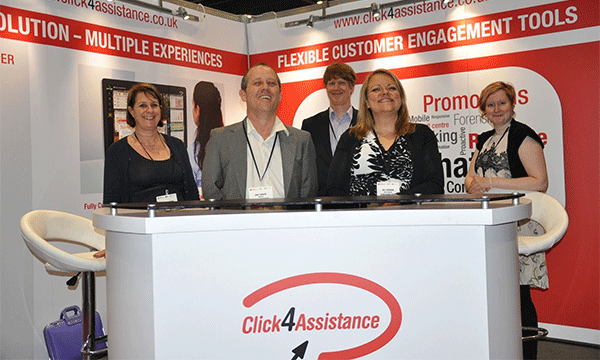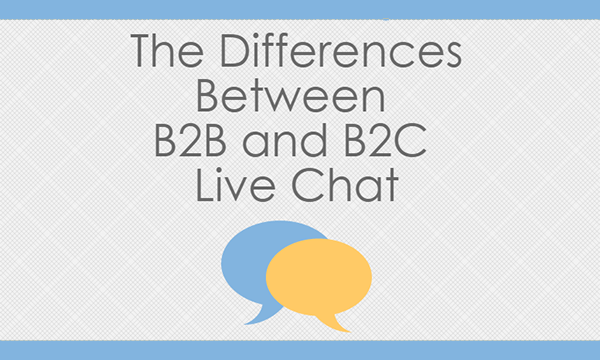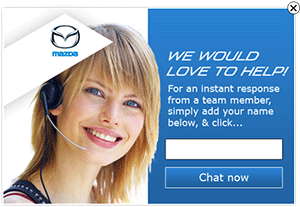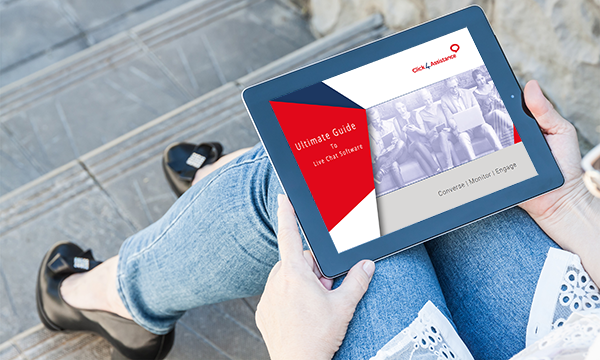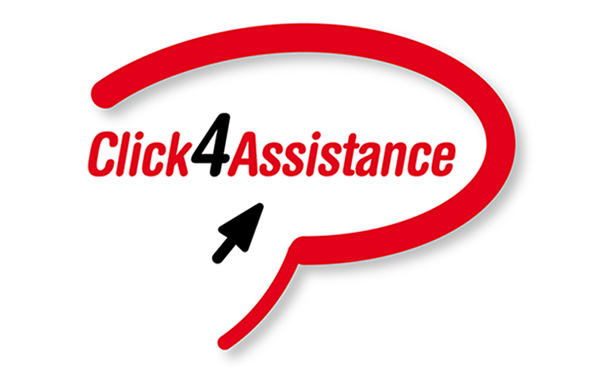B2B Live Chat: 5 Essential Steps to Success
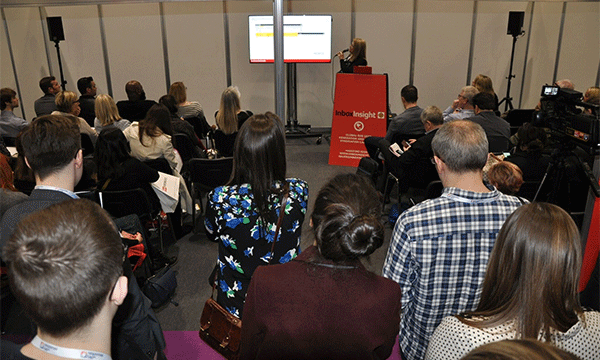
On Tuesday we shared with you our experience of exhibiting at the B2B Marketing Expo, where we mentioned that on the second day of the event, one of our senior account managers, Jill Stephens presented a keynote seminar on B2B Live Chat: 5 Essential Steps to Success.
The seminar covered customisation – the importance of design and placement for:
- Buttons
- Proactive Invitations
- Windows
And the importance of reporting and monitoring visitor activity correctly for your requirements.
Buttons
Firstly we are going to take a look at the chat button. There are two types:
- Embedded
- Sticky
The embedded button has a set position within the web page and disappears out of view when the website visitor scrolls.
It is best used when chat is not the primary call to action. It can be placed near to the company’s phone number and email address or amongst other links and buttons.
The Sticky button ‘sticks’ to the page, usually in the bottom right-hand side to emulate messaging functionality on social media platforms, as visitors are familiar with this positioning. This button stays in view regardless of where the visitor scrolls, allowing easy access to the communication channel when the need to contact the organisation arises.
Regardless of which button your company decides to use, the design should be considered to not only fit in with your branding but to encourage click throughs. Whether that is done through open body language and friendly characterisations:

Or the actual text:

These buttons are reactive and are placed on your website waiting for your visitors to take notice and click through to chat.
To grab the visitors’ attention, an invitation to chat can be proactively pushed through to the visitor.
Proactive Invitations
An image can automatically slide or blend onto the visitor’s’ page with an invitation to start a chat. The invitation can be set to appear when the visitor is on a certain page or has been on the website for a set amount of time.
Visitors are more willing to accept an invitation to chat that requests little (a name) to no information, as they are not sharing any identifiable details. Therefore your organisation should decide whether to include a name field or not within your designs. If declined the proactive can be set to not appear again for a specific time period, meaning the visitor may not see it again during their visit.
The imagery is important as this is what will grab the visitor’s attention.
3 Examples
IT Online Learning
Maintaining their consistent branding, they continue to use the image of their staff member with open body language. This is inviting to the visitor as it shows they are contacting a friendly organisation.
Home Heat Helpline
Home Heat Helpline assist visitors with advice about paying energy bills and keeping warm during the winter, the helpline also gives advice to low-income households in urgent need of heating help and advice.
Their proactive shows a young couple with a baby. The helpline tested different images and found that this particular image resonated well with their audience and increased the click throughs to chat.
Mazda
Their invitation includes a stock image of a customer service representative; this portrays the company as professional and friendly. The text on their proactive reiterates how helpful they are.
Windows
Once a visitor clicks on a button whether reactively or through a proactive invitation, they are taken to the next step of the chat journey.
There are two types of windows which can be initiated from either type of button:
- Pop-up
- Embedded
The pop-up window displays the chat in a new browser window; if the visitor navigates away from the website the chat will still be open, reducing the risk of interruption during the conversation. The visitor can resize the windows and move/minimise the window ensuring it is convenient to their requirements.
This type of window has a lot more ‘real estate’; therefore on the dialogue window your organisation can display important information including contact numbers, or present marketing material.
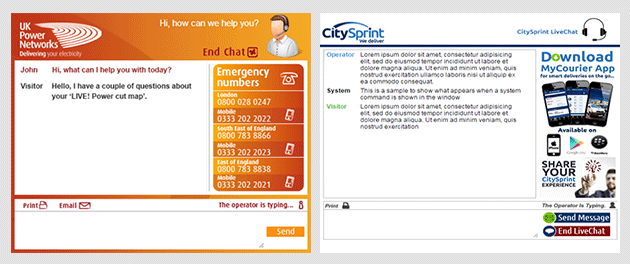
The embedded window sticks in the bottom right-hand corner as associated with social media, the window stays on the web page and is a lot smaller to be less intrusive during the browsing experience. This allows the visitor to stay in chat whilst they view the website.
Most companies will customise the embedded window to simply reflect their branding with their logo and colours:
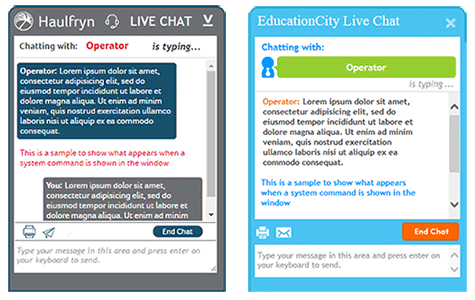
And whilst your visitor is scrolling through your website and having a chat, their stats are being collected.
Reporting
Click4Assistance has over 60 reports within the solution; these can be scheduled for automatically delivery to your email address which allows your company to easily analyse:
- Your operator's actions, including logging in and availability
- Chat information, containing full details, short summaries and missed opportunities
- Proactive reports, consisting of the sent, accept and decline rates of invitations
- Other reports including conversion details, crediting operators, keywords and search engine

Reporting is important for any changes that your organisation makes. Implementing live chat involves utilising resources including time, money and staff.
Being able to report on and create an accurate ROI is vital to analyse the full outcome of adding the solution. It also allows the business access to key performance indicators (KPIs) to monitor staff resources and set achievable targets and goals.
With communication channels including telephone and email preceding live chat, reporting enables your organisation to bench mark existing channels and compare the impact that live chat has, enabling your organisation to improve effectiveness whilst enhancing the customer experience.
Reporting effectively also helps monitor visitor behaviour.
Visitor Monitoring
The visitor monitoring centre shows your website visitors in real time, including what browser and the device they are using, their current page and which pages they have visited, noting if any are your main ‘hotspots’.
View prospects, or create a visitor as a prospect by building up a client record as you gather their information, on all future visits they will be highlighted to show that there are contact details against them. Adding visitors as prospects helps to fill your sales pipeline.
By monitoring visitor behaviour, your organisation can start to see areas of the website to alter and improve the customer experience to increase engagement.
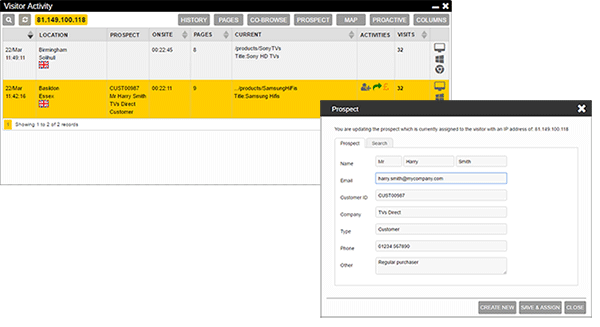
These were the 5 Essential Steps Jill covered in her seminar, click here to see the accompanying slides.
Click4Assistance has been providing live chat software for over 10 years, helping organisations successfully implement live chat to their website. For more information on the best live chat solution and how it can benefit your organisation, speak with our team on 01268 524628 or email theteam@click4assistance.co.uk.



















